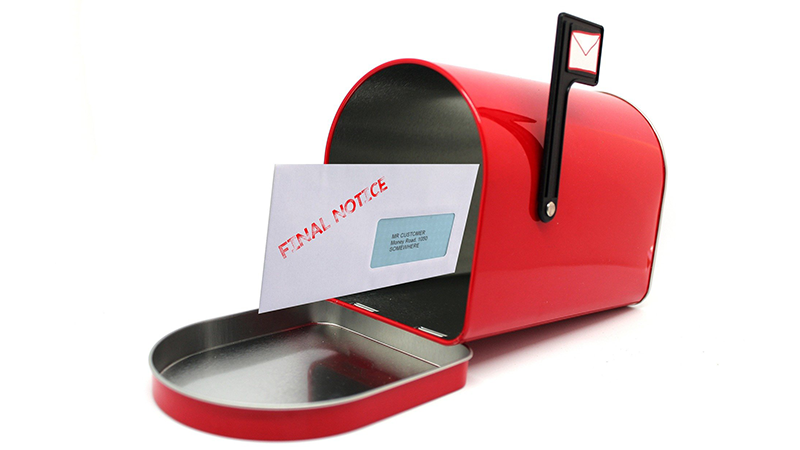By Emily Johnson
As an aspiring graphic designer, I know that my career path will most likely require advertising in some way. Be it flyers for events, logos and branding for a company or making web ads, graphic designers make commercial art; and commercial art usually contains some sort of call to action. As a designer – or marketer – you need to consider not only what action you are calling for consumers to take, but how you are making that call.
Over the past year, I have noticed a new trend in mailer ads (a.k.a. the original “spam”). In an effort to get people to open these solicitations, companies are disguising them as late bills. Of course, the letters do not say “late” anywhere on them; they simply state “open immediately” or “requires immediate action”; they have bright red stripes and plastic windows with red paper peeking through; they are almost always addressed to an actual resident as opposed to just saying “occupant”; and they may be from companies you actually have services through.
Receiving what looks like a late payment notice from a credit card company you do not have a credit card with is disturbing enough; personally, thoughts of identity theft always cross my mind as I get these frequently from Capital One, who I have no services through (way to make me associate your company with identity theft though, aces branding). I have also gotten offers for home financing that look like late bills from the credit union my car loan is through, immediately sending me into a panic, thinking I forgot to drop off a payment. Spectrum loves to send advertisements on red or pink paper as well, the universal symbols for “this envelope will ruin your day.”
I understand that most letters with “Great Offer Inside” will go straight in the recycling bin and ads unseen are, technically, a failure. But are ads that scare people at best and make them angry at worse really better? These letters get your attention, sure, but it is not positive. It gives the impression that you are dishonest and will gladly manipulate your customers if it means increasing profits. Is that really the image to project in this climate?




